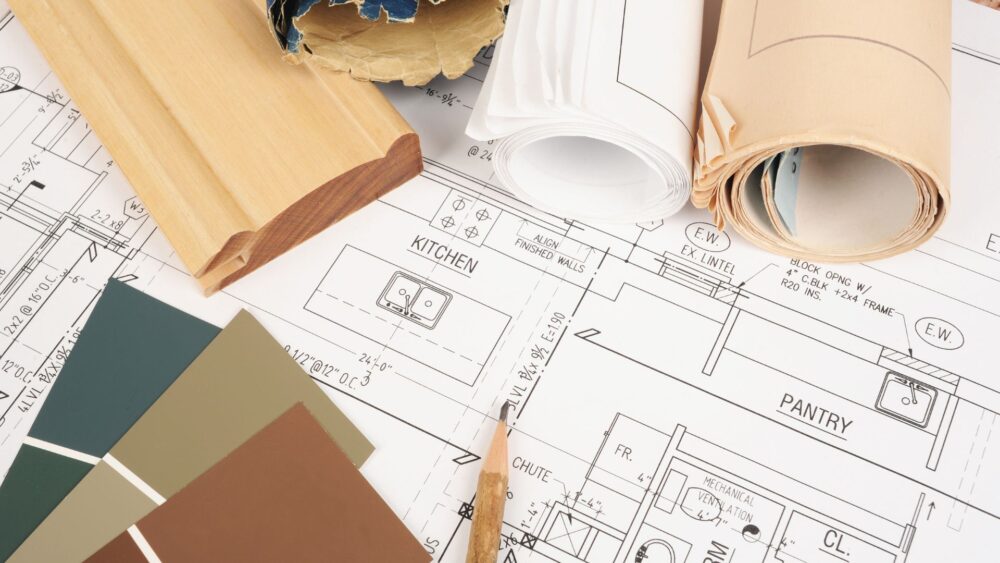Embarking on home renovations can be as exciting as it is daunting. Yet amidst choosing paint colors and floor plans, the importance of safety can get lost in the shuffle. Renovating with Safety in Mind: Ensuring a Healthy and Secure Home Environment isn’t just about aesthetics; it’s crucial for protecting you and your loved ones from hidden dangers like mold, lead paint, or asbestos—hazards often found lurking in older homes.
Safety should always top your list of priorities during any renovation project. Every step, from snagging the right permits to picking contractors who really care about keeping things safe on the job, matters when you’re aiming to not just beautify your space but also make it safer for everyone.
Understanding the Hazards of Home Renovation
In today’s digital age, DIY enthusiasts have unprecedented access to a plethora of resources, from step-by-step tutorials to handy tips and tricks. These resources can indeed empower homeowners to take charge of their renovation projects, saving on costs and imbuing a sense of accomplishment. Yet, amid the excitement of envisioning your dream home, it’s easy to overlook the potential hazards lurking beneath the surface.
Older homes, in particular, can harbor hidden dangers that may not be immediately apparent. From the presence of toxic materials like lead paint and asbestos to the growth of harmful mold, these hazards can pose serious health risks if not addressed properly during the renovation process.
Recognizing Potential Dangers in Older Homes
Before you dive headfirst into fixing up an old home, it’s smart to keep an eye out for hidden problems that might be lurking. Many homes built before the late 1970s often contain lead-based paint, which can pose significant health risks, especially to young children and pregnant women. Similarly, asbestos, a once-popular building material, can be found in various parts of older homes, such as insulation, flooring, and roofing.
Another common hazard in older homes is mold growth, which can thrive in damp, poorly ventilated areas. Mold exposure can trigger allergic reactions, respiratory issues, and other health problems, making it essential to identify and address any mold issues before starting a renovation project.
Dealing with Mold, Lead, and Asbestos
If you’re getting the vibe that mold, lead, or asbestos might be crashing at your place uninvited, it’s super important to play it safe. Mold remediation should be handled by professionals who can safely remove and dispose of affected materials. So, when you’re dealing with lead and asbestos, make sure to bring on board certified contractors who know their way around safely handling and getting rid of these risky materials.
Let’s get one thing straight – never, and I mean never, should you skimp on safety when it comes to giving your place a facelift. Bringing on board professionals with the right licenses, getting all your permits in order, and dealing safely with any hazardous materials can make all the difference in keeping your home safe and healthy while you give it that new look.
Planning for a Safe Renovation Project
Safety should always remain at the forefront of any home improvement undertaking. While DIY endeavors may seem straightforward on the surface, they can often involve intricate processes and technical know-how. Without the proper expertise and training, attempting complex renovations can pose significant risks to both property and personal safety.
To ensure a safe and successful renovation project, it’s essential to plan ahead and take the necessary precautions. Getting the right permits, spotting any potential risks early on, and sticking to safe work habits all through your renovation project are key steps you don’t want to skip.
Securing Proper Permits
Before starting any renovation work, it’s crucial to check with your local building department to determine if permits are required. Building permits ensure that your renovation project adheres to local building codes and safety standards, protecting both your home and its occupants. Skipping out on the right permits isn’t just a headache—it can hit your wallet hard with fines and even land you in legal hot water.
Assessing Potential Hazards
Spotting potential problems early on is super important when you’re planning a renovation that’s both safe and smooth. This involves identifying any structural issues, electrical or plumbing concerns, and the presence of hazardous materials like mold, lead, or asbestos. By thoroughly evaluating your home’s condition and potential risks, you can develop a comprehensive plan to address these issues and ensure a safe working environment.
Implementing Safe Work Practices
Making sure we follow safe work practices is key to keeping those nasty accidents and injuries at bay while we spruce up the place. This includes using appropriate personal protective equipment (PPE), such as hard hats, safety glasses, and respirators, when necessary. It’s also crucial to maintain a clean and organized work area, properly store and handle tools and materials, and follow recommended safety guidelines for each task.
Ultimately, prioritizing safety during the renovation process is not just about complying with regulations—it’s about protecting yourself and those around you from harm. Keeping safe work habits front and center means you can cut down on the chances of any mishaps or injuries, paving the way for a renovation project that’s not only successful but also secure.
Choosing a Safety-Conscious Contractor
Undertaking a home renovation endeavor can be a thrilling prospect, with countless online tutorials and guides fueling the allure of the DIY route. However, amidst the excitement, it’s essential to recognize the paramount importance of safety considerations. While the temptation to handle the project independently may be strong, entrusting the task to professional home renovation services ensures not only a stylish transformation but also prioritizes safety above all else.
When selecting a contractor for your renovation project, it’s crucial to choose one who places a strong emphasis on safety and adheres to industry-standard workplace safety practices. A safety-conscious contractor will not only protect their own team but also ensure the well-being of you and your family throughout the renovation process.
Selecting a Certified Contractor
One of the most important steps in choosing a safety-conscious contractor is to verify their certifications and licenses. A certified contractor has undergone the necessary training and has demonstrated their competence in their field. They are well-versed in building codes, safety regulations, and industry best practices, ensuring that your renovation project is completed to the highest standards of quality and safety.
Understanding Workplace Safety Practices
A safety-conscious contractor will have a comprehensive understanding of workplace safety practices and will implement them diligently throughout the renovation process. This includes providing their team with the necessary personal protective equipment (PPE), such as hard hats, safety glasses, and respirators, as well as ensuring that all tools and equipment are properly maintained and used according to manufacturer guidelines.
Establishing clear communication and coordination among all parties involved in the renovation can help mitigate potential risks and ensure a smooth and efficient workflow. Regular safety meetings, hazard assessments, and emergency protocols can help identify and address safety concerns proactively, reducing the likelihood of accidents or mishaps.
Ensuring Child Safety During Home Renovations
Sprucing up your home is a blast for the whole gang, but keep an eye out—it’s not all fun and games when it comes to keeping the little ones safe from potential hazards. With curious minds and a tendency to explore, children can easily find themselves in harm’s way amidst the chaos of a renovation project. Being a parent and homeowner means putting your kid’s safety first, especially nowadays.
So, with a couple of smart moves up your sleeve, you can nail creating a kid-friendly zone while still pushing forward with those home makeover plans. From establishing designated safe zones to properly securing tools and chemicals, there are several steps you can take to minimize potential hazards and keep your little ones out of harm’s way.
Creating Safe Zones for Children
Create a safe zone for kids and pets that is well away from the work area. Make sure there is no access between the two areas and the safe zone has everything they need. This may mean moving their bedroom to the back of the house while the front of the house is being renovated.
Properly Securing Tools and Chemicals
Keep tools and building equipment in a locked area. Kids love to explore and play with new things but construction tools and equipment are not toys and can cause serious injuries.
Educating on Safety Measures
Talk to your kids about the dangers of the renovation site. Explain to them that it is not safe for them to be in that area or to touch any of the tools or equipment.
These are just a handful of health and safety measures you can put into practice when doing construction work around the house to keep children safe from any potential hazards, and risk of injury.
Maintaining a Healthy Living Environment Post-Renovation
When it comes to home improvement, the temptation to revamp your living space with a touch of style and freshness is simply irresistible. So, whether you’re diving headfirst into a massive overhaul or just sprucing up your space with some small tweaks, setting out to revamp your home is always an adventure filled with both thrills and eager anticipation. Yet, amid the thrill of envisioning your ideal living space, it’s imperative to prioritize safety considerations above all else.
After wrapping up your renovation adventure, it’s just as crucial to focus on creating a home environment that supports the health and happiness of you and your loved ones. By incorporating elements of biophilic design, ensuring proper ventilation and lighting, and choosing health-conscious colors, you can create a space that not only looks stunning but also fosters a sense of comfort and vitality.
Implementing Biophilic Design
Biophilic design takes the magic of nature and brings it right into our man-made spaces, making sure we stay connected to the great outdoors even when we’re indoors. By incorporating natural elements such as plants, natural light, and organic materials into your home, you can create a space that promotes relaxation, reduces stress, and enhances overall well-being. Consider adding indoor plants, installing large windows to maximize natural light, and opting for materials like wood, stone, and natural fibers to bring a touch of the outdoors inside.
Ensuring Proper Ventilation and Lighting
Ensuring the safety of your home during renovations is not just about adhering to building codes and regulations; it’s about safeguarding yourself and your loved ones from potential hazards. From electrical wiring to structural integrity, each aspect of the renovation process demands careful attention to detail. Looking the other way when it comes to safety can not only hit your wallet hard but also put you in some serious danger.
Proper ventilation is essential for maintaining healthy indoor air quality and preventing the buildup of harmful pollutants. Install exhaust fans in bathrooms and kitchens to remove excess moisture and odors, and consider investing in a whole-house ventilation system to ensure a steady flow of fresh air throughout your home. Additionally, optimize natural lighting by strategically placing windows and skylights to reduce the need for artificial lighting and create a more inviting atmosphere.
Choosing Health-Conscious Colors
When it comes to home improvement, the temptation to revamp your living space with a touch of style and freshness is simply irresistible. So, whether you’re diving headfirst into a massive overhaul or just sprucing up your space with some small tweaks, setting out to revamp your home is always an adventure filled with both thrills and eager anticipation. Yet, amid the thrill of envisioning your ideal living space, it’s imperative to prioritize safety considerations above all else.
The colors you choose for your home can have a significant impact on your mood, energy levels, and overall well-being. Opt for calming, nature-inspired hues like soft greens, blues, and earthy tones to create a soothing and restorative environment. These colors have been shown to reduce stress, promote relaxation, and enhance mental clarity, contributing to a healthier living space.
Embracing Modern Safety Technology in Home Renovations
In the midst of a renovation, prioritizing safety isn’t just a suggestion—it’s a non-negotiable. Establishing and upholding safe work practices throughout the process is paramount to reducing the risk of accidents or injuries. Between the dust, fumes, clutter, and total chaos that come with it, there’s a bunch of steps you can take ahead of time to make sure your renovation goes smoothly and safely.
One such measure is embracing modern safety technology, which has revolutionized the way we approach home renovations. By incorporating cutting-edge devices and systems into your renovation plan, you can significantly enhance the safety and security of your living space, providing peace of mind for you and your loved ones.
Investing in Carbon Monoxide Detectors
When planning your renovation project, it’s essential to consider the specific safety needs and priorities of your household. Whether you’re focused on fire prevention, home security, or overall peace of mind, there’s a wide range of modern safety technology solutions available to meet your requirements. Incorporating these innovations into your renovation not only enhances the safety and security of your living space but also adds long-term value and appeal to your property.
One of the most critical safety devices to consider is a carbon monoxide detector. Carbon monoxide sneaks up on you; it’s a silent, invisible gas that packs a deadly punch when breathed in too much. Installing carbon monoxide detectors throughout your home, especially near sleeping areas and fuel-burning appliances, can provide early warning in the event of a leak, allowing you and your family to evacuate safely.
Utilizing Home Security Systems
With advanced safety technology becoming increasingly accessible and affordable, there’s never been a better time to invest in the protection and well-being of your home and loved ones.
Home security systems have come a long way in recent years, offering a wide array of features and capabilities to suit various needs and budgets. From smart doorbells and cameras that allow you to monitor your home remotely to advanced motion sensors and alarms that can detect potential intruders, these systems provide an extra layer of protection and peace of mind. Consider integrating a comprehensive home security system into your renovation plans to ensure the safety and security of your newly renovated space.
FAQs in Relation to “Renovating With Safety in Mind: Ensuring a Healthy and Secure Home Environment”
Is it safe to live in a house while renovating?
Whether it’s safe to live in a house during renovation largely depends on the scale of the project. For small-scale renovations, it’s generally safe. However, for larger projects, especially those involving potential hazards like asbestos, it’s advisable to think twice.
How do you live in a house you are renovating?
To live in a house during renovation, it’s important to create a livable space away from the chaos. This can be achieved by sealing off work zones and maintaining clear paths to essential areas like bathrooms.
How do I prepare my home for renovation?
Preparing your home for renovation involves several steps. First, clean out the area that’s going to be worked on. Next, secure any valuables and cover furniture in other areas to protect them from dust and debris. Lastly, ensure you have all necessary permits lined up early to avoid any legal issues.
What is the meaning of house renovation?
House renovation refers to the process of reworking your home to upgrade its style, functionality, or energy efficiency. This can involve a range of activities, from knocking down walls to updating fixtures and fittings.
Conclusion
Rewriting our Living Spaces Safely
The narrative around home renovation often centers on transformation—aesthetic upgrades that turn houses into dream homes. But let’s remember another vital transformation happening beneath the surface when we focus on renovating with safety at its core.
It transforms uncertainty into confidence—the kind built upon solid foundations of well-planned projects where risks are minimized through careful consideration.
This journey doesn’t end once the last contractor leaves; rather, it extends far beyond by setting new standards for what we consider essential within our sanctuaries—safety and health.
As we breathe new life into these spaces, there’s a chance not only to give them a facelift but also to rethink how they can be sanctuaries of wellbeing first and foremost.
Find & Book Estimates With Top Local Contractors
Go to costguide.com to compare local pros for your project.




